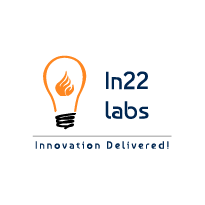Artificial Intelligence
Fine-Tuning vs. Prompt Engineering

In the world of AI, businesses and developers face a common dilemma when deploying LLMs: Should they fine-tune the model or rely on prompt engineering? Both approaches have their pros and cons, and the right choice depends on various factors like cost, data availability, and project requirements.
What is Fine-Tuning?
Fine-tuning involves training a pre-existing model on a specific dataset to adapt it to a particular domain or task. It requires labeled data, computational power, and a robust training pipeline.
Pros:
✅ Produces highly customized and accurate results
✅ Useful for domain-specific applications
✅ Improves model adaptability for recurring tasks
Cons:
❌ Requires significant computational resources
❌ Needs a substantial amount of labeled data
❌ Time-consuming compared to prompt engineering
What is Prompt Engineering?
Prompt engineering involves crafting optimized text inputs to get the best responses from a pre-trained model without modifying its underlying parameters.
Pros:
✅ Quick and cost-effective
✅ Does not require additional training
✅ Easy to iterate and improve
Cons:
❌ Less control over model responses
❌ May not generalize well across different tasks
❌ Can require trial and error to refine prompts
Choosing the Right Approach for Your AI Project
When to Choose Fine-Tuning
- When high accuracy is required in a niche domain (e.g., medical diagnosis, legal document analysis)
- If the project requires processing a large dataset with consistent patterns
- When you need long-term AI deployment with stable and optimized performance
When to Choose Prompt Engineering
- If you need a quick prototype or proof of concept
- When handling diverse or dynamic queries where hard-coding responses is not feasible
- If the budget and resources for model training are limited
How IN22 Labs Solved This Challenge
At IN22 Labs, the team worked on multiple AI-driven projects that required intelligent automation and decision-making capabilities. A major challenge they faced was optimizing AI for a job portal, where job recommendations needed to be highly relevant to users. The team had to decide whether to fine-tune an existing language model or use prompt engineering for personalized job matching.
Their Approach:
- Fine-Tuning for Structured Data Processing: The team fine-tuned an LLM with historical job application data to improve job recommendations based on candidate skills and employer preferences.
- Prompt Engineering for Dynamic Queries: Instead of training the model on every possible question, they developed optimized prompts to generate relevant responses in real-time for job seekers and employers.
- Hybrid Approach for Best Results: By combining fine-tuning for structured tasks and prompt engineering for interactive elements, IN22 Labs achieved a highly efficient AI-driven solution with reduced computational costs.
Conclusion
Both fine-tuning and prompt engineering have their place in AI development. Fine-tuning is best for specialized applications requiring precision, while prompt engineering is ideal for rapid prototyping and flexibility. IN22 Labs’ hybrid approach proved that balancing both techniques can lead to an efficient, cost-effective, and scalable AI solution.
If you’re working on an AI project and need to decide between fine-tuning and prompt engineering, consider your data availability, resource constraints, and end-user requirements. Sometimes, the best solution lies in a combination of both!
Tags
Written by
Aishvarya Selvakumar
Published on
03 March 2025






